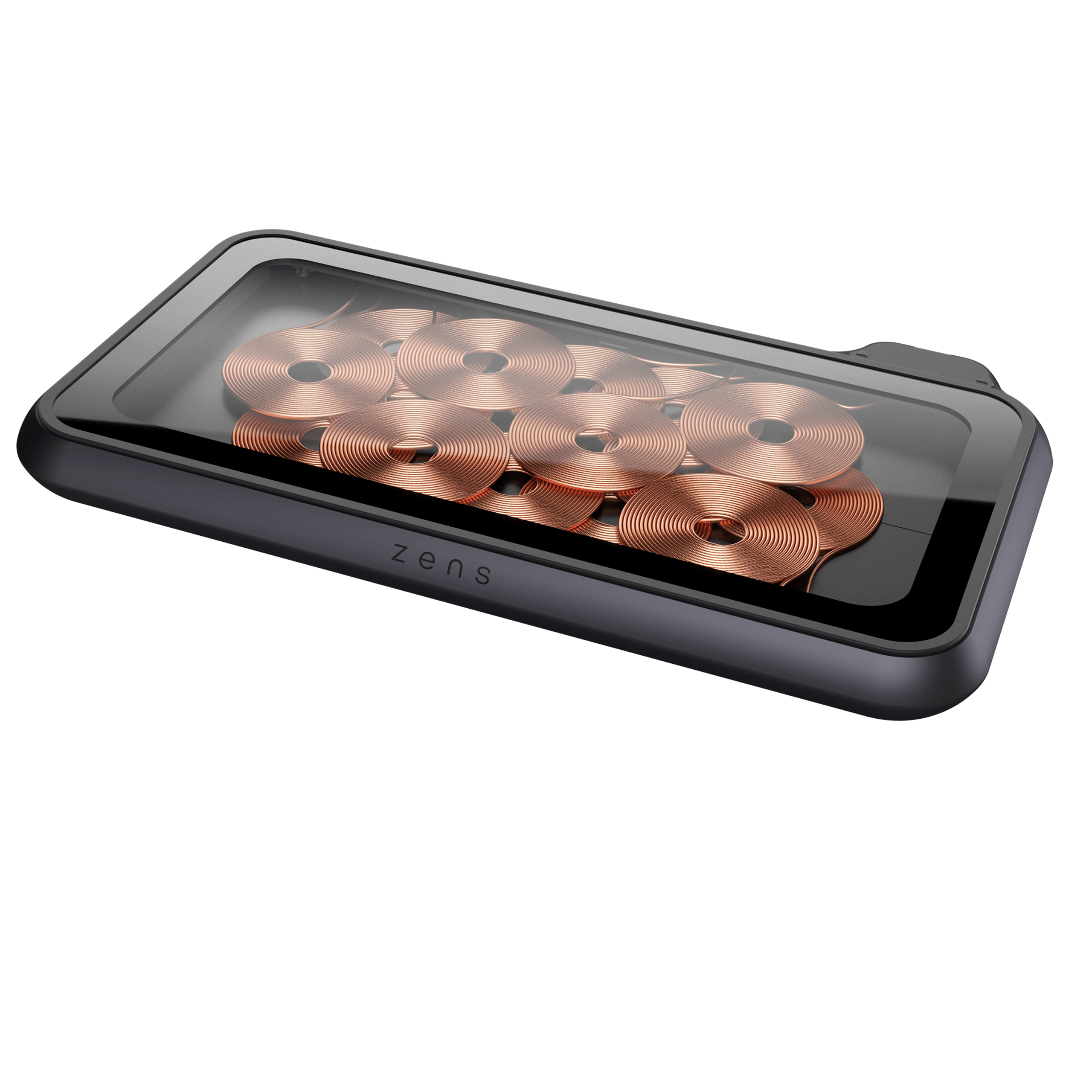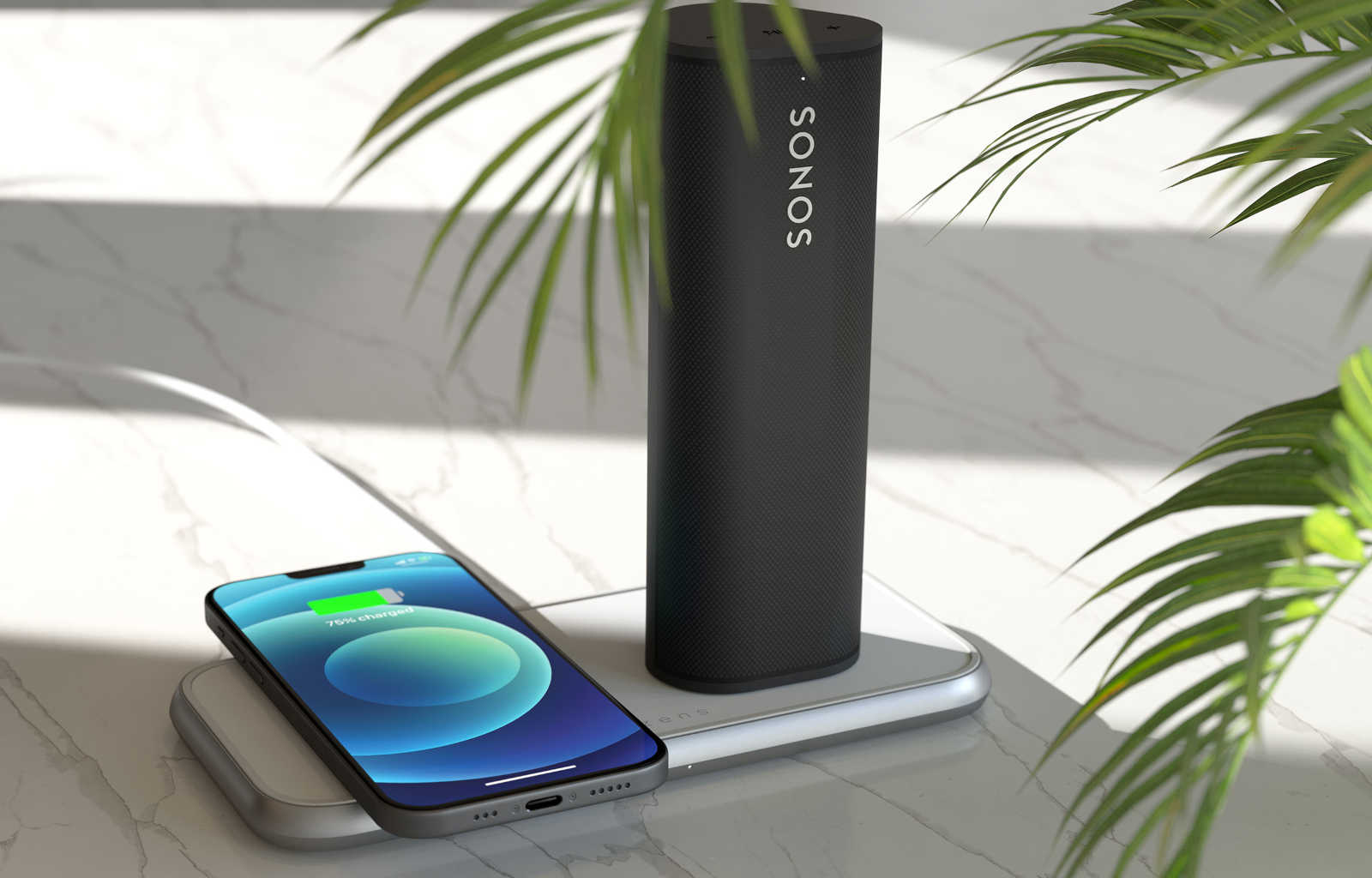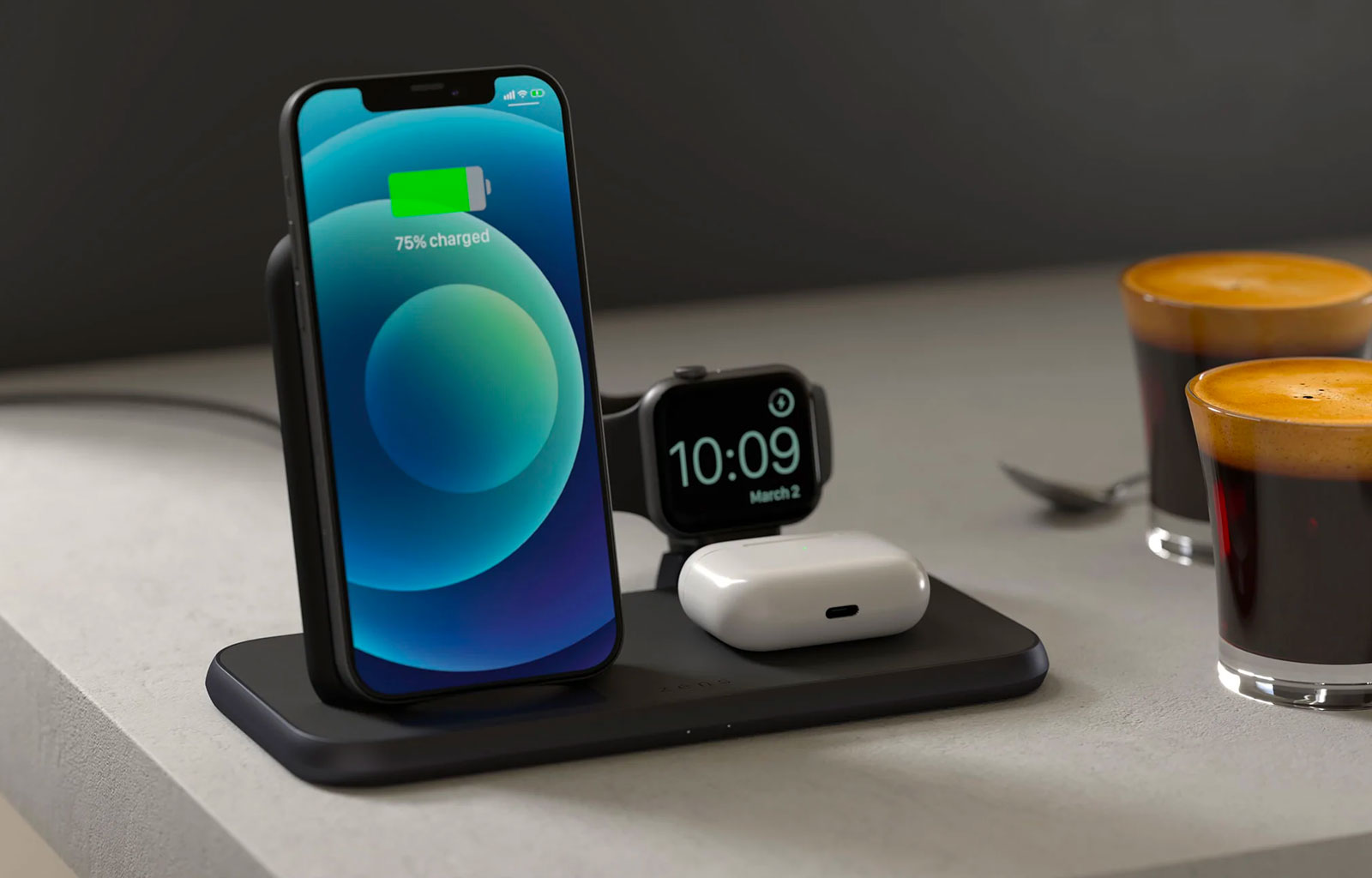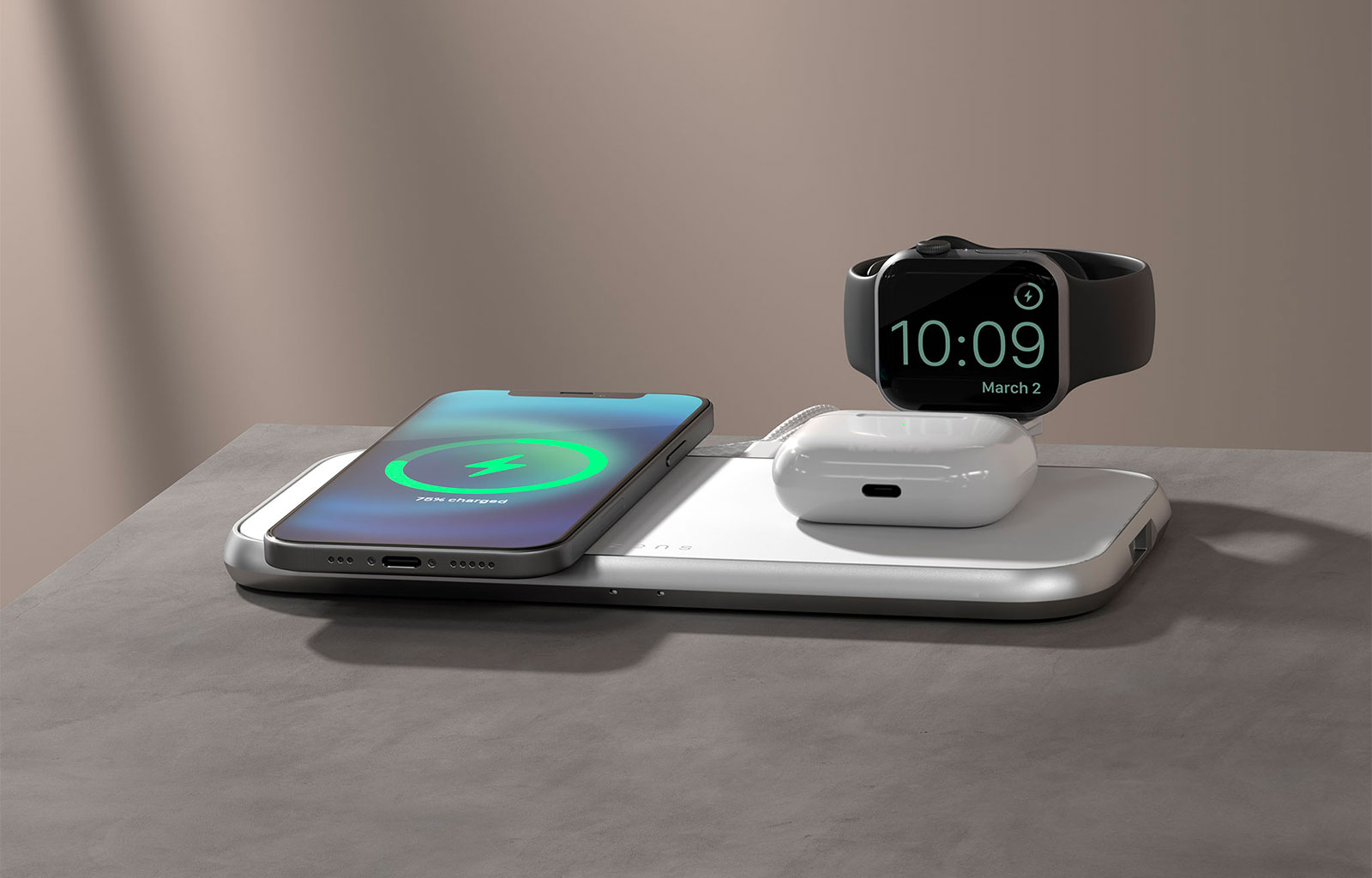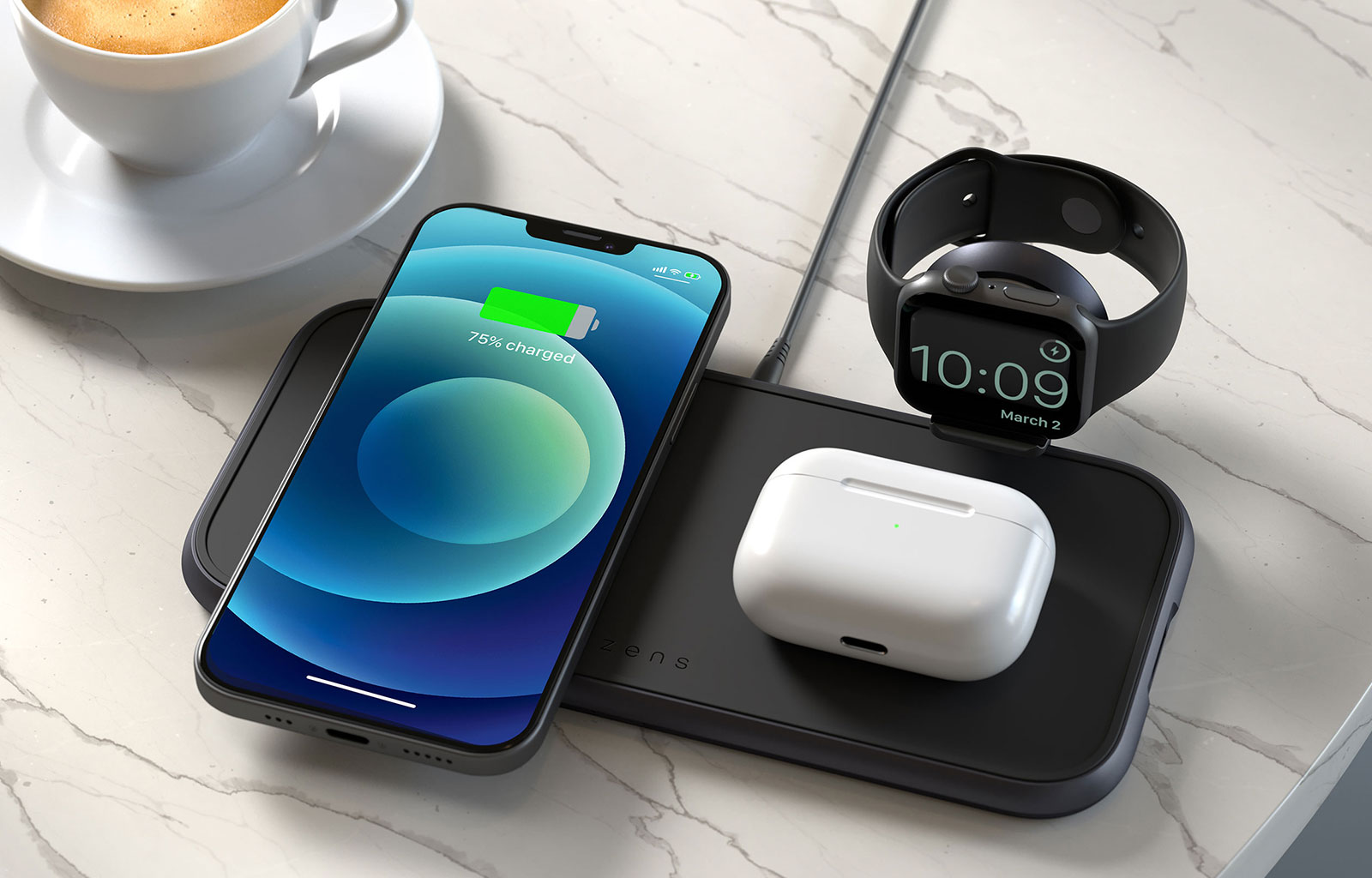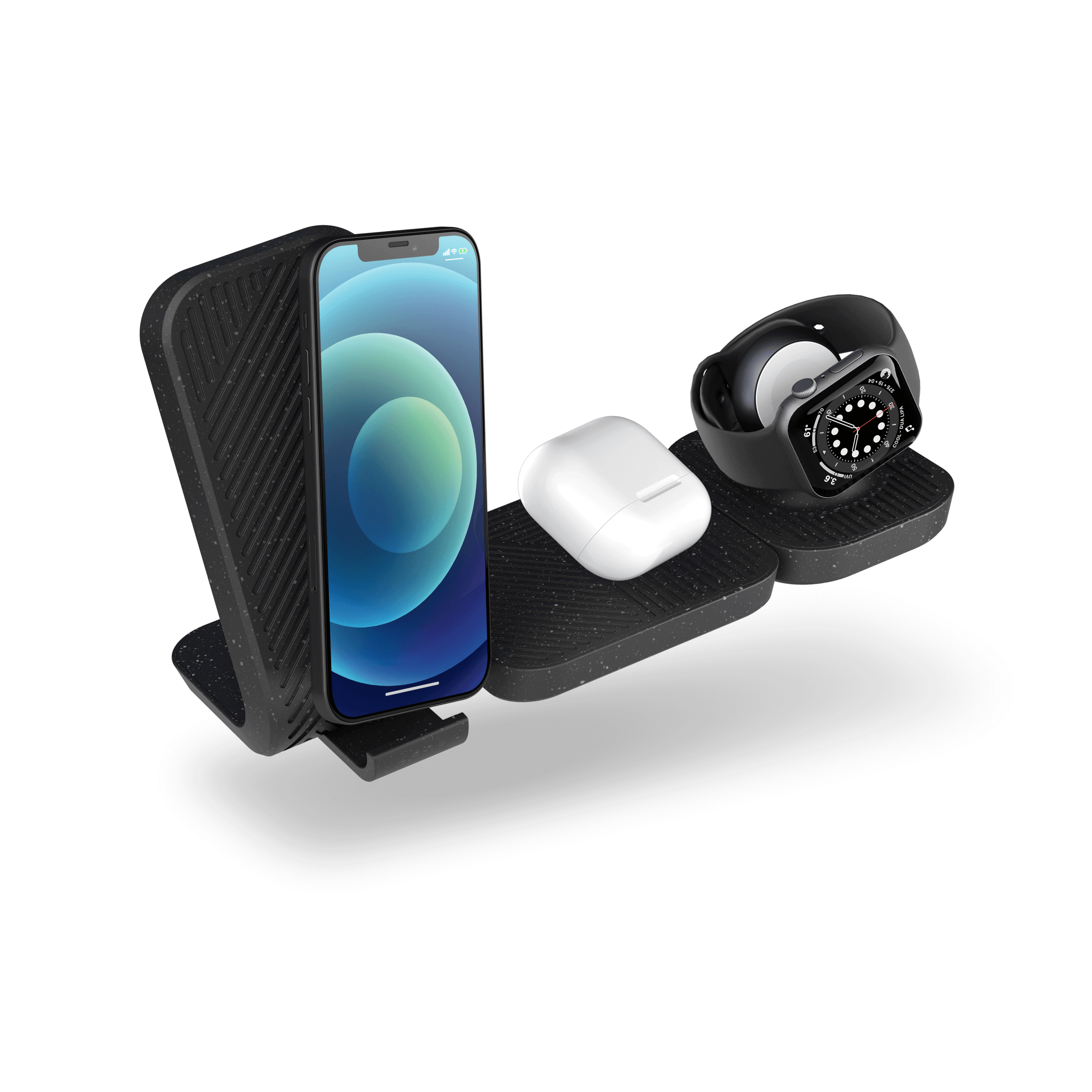Yes, Zens has developed wireless chargers for both individual and shared (dual chargers) use. Depending on the model, you can wirelessly charge one or two phones at the same time by placing them next to each other on the dual charging pad. We also have 3-in-1 chargers and 4-in-1 chargers that can charge up to 4 devices simultaneously. Want to go all out? With our Modular Series chargers you can charge up to 6 devices at once. Talk about convenience.
In recent years, wireless charging has become more commonly available in our daily lives. Already over 500 types of devices, including phones, are in the market which can be charged on our wireless chargers. You may have been using wireless charging for many years already if you possess an electrical toothbrush: you just put it on the holder and it starts charging.
The principle to charge your smartphone or smartwatch wirelessly is the same: just put your phone on a wireless charger or charging pad and it starts charging. Very convenient, no need to connect a cable first. But how does wireless charging work?

